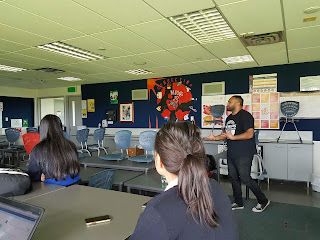The winners:
Congratulations to Auaha 2 for coming third place, by collecting 221 bottles! You have won the third place prize of $50!
Congratulations to Tirohanga 4 for being the first runners up, by collection 244 bottles! You have won the second place prize of $100!
A HUGE congratulations to Kaitoro 3 for winning the competition by collecting a huge 533 bottles! You have truly earned your prize of $150!
Once again thank you to all those who participated in this competition, you have really helped us a lot for collecting plastic bottles for us to create a green house to benefit out community. By collecting bottles, you have not only helped us, but have had a better impact n the community. We collected 1966 bottles, that is 1966 less bottles being thrown in the dump, but most importantly, there are now 1966 less plastic bottles that could potentially harm the environment. All thanks to everyone that participated.
This is the full list of the bottles collected by each tutor:
| Tutor Name | Number of Bottles |
| Au 1 | 11 |
| Au 2 | 221 |
| Au 3 | 9 |
| Au 4 | 1 |
| Au 5 | 156 |
| Au 6 | 2 |
| Au 7 | 39 |
| Au 8 | 4 |
| Au 9 | 2 |
| Au 10 | 24 |
| Auaha Total | 469 |
| Kr 1 | 1 |
| Kr 2 | 6 |
| Kr 3 | 533 |
| Kr 4 | 8 |
| Kr 5 | 0 |
| Kr 6 | 149 |
| Kr 7 | 2 |
| Kr 8 | 0 |
| Kr 9 | 136 |
| Kr 10 | 0 |
| Kaitoro Total | 835 |
| Trh 1 | 29 |
| Trh 2 | 3 |
| Trh 3 | 1 |
| Trh 4 | 244 |
| Trh 5 | 55 |
| Trh 6 | 21 |
| Trh 7 | 87 |
| Trh 8 | 11 |
| Trh 9 | 1 |
| Trh 10 | 3 |
| Tirohanga Total | 455 |
| Wh 1 | 45 |
| Wh 2 | 18 |
| Wh 3 | 14 |
| Wh 4 | 76 |
| Wh 5 | 0 |
| Wh 6 | 4 |
| Wh 7 | 7 |
| Wh 8 | 38 |
| Wh 9 | 2 |
| Wh 10 | 2 |
| Wh 13 | 1 |
| Whainga Total | 207 |
| Kt 1 | 0 |
| Kt 2 | 0 |
| Kt 3 | 0 |
| Kt 4 | 0 |
| Kt 5 | 0 |
| Kt 6 | 0 |
| Kt 7 | 0 |
| Kt 8 | 0 |
| Kt 9 | 0 |
| Kt 10 | 0 |
| Kaitataki TOTAL | 0 |
| School Total | 1966 |
Thank you once again to those who participated.
Sincerely
The For the Future Group






